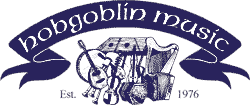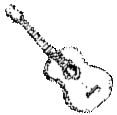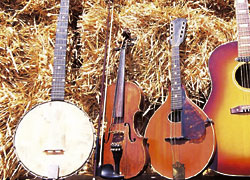
| THE HOBGOBLIN INFO SOURCE | |||
| HOBGOBLIN INDEX PAGE | HOBGOBLIN INFO INDEX | CATALOGUE CONTENTS | UKULELE ONLINE SALES | SECONDHAND PRICES |
| Ukulele FAQ | ||
 |
ON THIS PAGE: Under Construction! Ukulele Information RELATED PAGES: Care & Maintenance Tunings & Gauges |
 |
|
© Copyright Hobgoblin Music 1983, 2000. This text may be freely distributed in whole or in part so long as the copyright holder is clearly acknowledged. Ukulele InformationThe ukelele or ukulele is a family of instruments from Hawaii, the most common sizes are soprano and baritone. The instrument came to Hawaii with Portuguese fishermen, and it has its ancestry in Iberian cuatro type instruments. Used for traditional and popular music in Hawaii. It got banjoed (for volume) and was used in British music hall and American Vaudeville. George Formby is the most famous English name, but Tessy O'Shea was no slouch. The Ukulele uses tuning related to the guitar and chord shapes are the same as the top 4 of a guitar. Note that on the soprano uke the 4th string is tuned an octave above what you'd expect, which is called a re-entrance tuning. Re-entrance tuning is not traditional to all sizes of ukuleles, but it is commonly used on all of them, the baritone being the most usual exception to this. Soprano and concert ukes are tuned GCEA (C tuning), or ADF#B (D tuning). Tenors usually also tune to C tuning, and baritones to DGBE or EAGD. When tuned to DGBE, the baritone ukulele is the exact equivalent of the top four strings of a guitar, so it's a very easy instrument for guitar players to pick up. |
Back to the Top of the Page